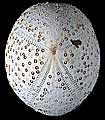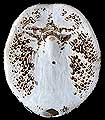The Echinoid Directory
Paramaretia Mortensen, 1950, p. 160
| Diagnostic Features |
|
|---|---|
| Distribution | Recent, Australia and New Zealand; 150-475 m. |
| Name gender | feminine |
| Type | Paramaretia multituberculata Mortensen, 1950, p. 160, by original designation. |
| Species Included |
|
| Classification and/or Status |
|
| Remarks |
|




